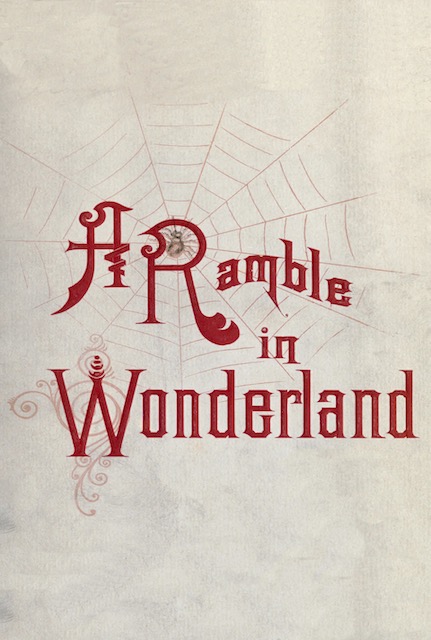Although the Northern Pacific may have been progressive in hiring a woman to write its 1890 Wonderland booklet, it wasn’t progressive enough to use her travelogue for more than one year, as it had with John Hyde’s. Instead, for 1891, it turned to Albert B. Guptill (1854-1931). Not only was Guptill not as well-known as Elia Peattie, A Ramble in Wonderland is the first of Guptill’s only two major known works, the other being an 1894 guide to Yellowstone.
 Click image to download a 42.9-MB PDF of this 112-page booklet.
Click image to download a 42.9-MB PDF of this 112-page booklet.
Born in Maine, Guptill graduated from Harvard and moved to Minnesota in 1875 where he worked as a school administrator and lawyer. Later, he moved to Fargo where he continued to practice law. In 1898, he left his family in Fargo to join the rush to the Klondike where, like so many others, he failed to make it rich and instead ended up working for a law firm in Dawson City, Yukon. He eventually returned to Fargo where he died in 1931.
I can find no reason why Northern Pacific would hire Guptill to write a travelogue. While rail officials may have believed they needed to appeal to men more than the one written by Peattie, there were plenty of real writers to choose from, so how and why did it pick a mediocre attorney from Fargo?
The first paragraph in the introduction alone is off-putting: it’s composed of a single, 137-word run-on sentence, while the first paragraph of the travelogue itself is even worse with nearly 200 words in one sentence whose ending seemingly has nothing to do with the beginning. The second paragraph is more than 500 words though it is mercifully broken into several sentences. This kind of writing gives double-meaning to the word “ramble.”
The title, A Ramble in Wonderland, recalls an 1878 book by Edwin James Stanley, Rambles in Wonderland (copies of which are downloadable from archive.org). Stanley, a Montana resident who wrote several other books including an 1884 history of Montana, uses short paragraphs made up of short sentences — my style of writing. Both Guptill and Stanley wrote in the first person, but Guptill’s book is ponderous and dull while Stanley’s is still exciting to read 145 years later.
Just as the quality of the writing declined, the quality of the cover art fell as well. The cover of this edition is nowhere near as attractive as that for 1890. Just what does a spider have to do a trip to the Northwest, rambling or not? At least the 1890 cover sent a message that the Northwest and Alaska were safe for any and all tourists.
New for this edition are two fold-out maps — one of Yellowstone and one of the Northern Pacific Railroad — at the beginning and end of the booklet. Previous booklets had contained nearly identical maps but they didn’t fold out and so were necessarily smaller.
NP used Guptill’s ramble in both the 1891 and 1892 Wonderlands. Archive.org has two copies of each edition, but the 1892 copies lack a cover, so I’ll just present the 1891 one here and go on to 1893 tomorrow. To make today’s PDF, I’ve taken the best pages from each of the two 1891 editions, cleaned up the covers, and brightened them up. As with the other wonderlands, the archive.org PDFs may be smaller, so if you have a slow internet connection you may want to download theirs.
